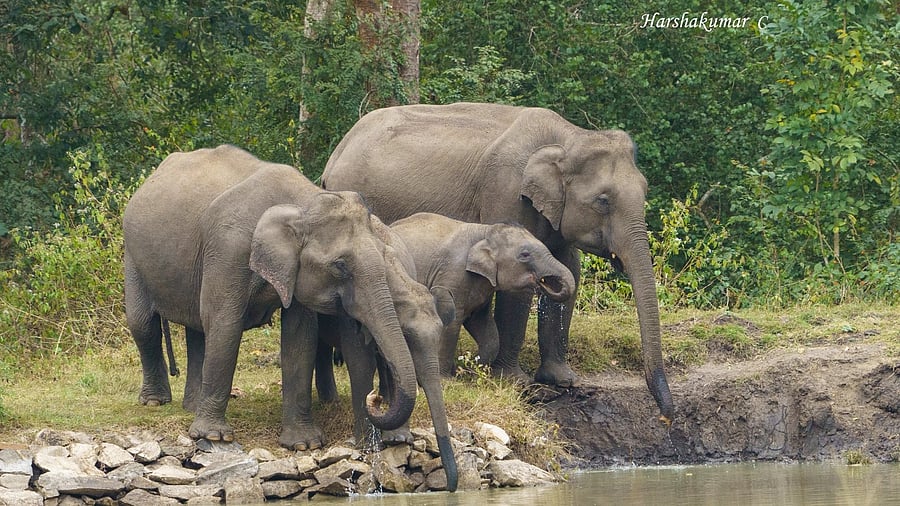
Elephants at Nagarahole Tiger Reserve.
Credit: Special Arrangement
Even as Karnataka has an average of 6,395 elephants as per the interim report on elephant census released recently, Bandipur Tiger Reserve (BTR) has the highest, followed by Nagarahole Tiger Reserve (NTR), both of which are in the Mysuru region.
The officials attributed the success to the protection and conservation measures, mainly by frontline field staff and improvement of habitat, along with the cooperation of farmers on the fringes of the forests.
Bandipur has 1,116 elephants with an upper limit count of 1,289 elephants and a density of 0.96 per sq km. Nagarahole has an average of 831 elephants, with an upper limit count of 961 elephants and density of 0.93 per sq km.
A tusker in Bandipur Tiger Reserve.
Credit: Special Arrangement
This data is based on the Interim Report of Asian Elephant population and its size and structure estimates for Karnataka, released on August 9, shared by Additional Principal Chief Conservator of Forests Kumar Pushkar.
Elephant Use Area
In Bandipur, elephant population estimation (it is not headcount) was done in 108 sample blocks, covering all beats, with one block in each beat. While Bandipur is spread over 1,802.6 square km, potential and current elephant use area is 1,168 square km of which 540 sampled 'Elephant Use Area' was covered during the survey. Bandipur had 1,100 elephants as per the previous population estimates of 2017.
Similarly, NTR is spread over 894.27 square km, potential and current elephant use area is 894 square km, of which 448 sq km sampled Elephant Use Area was covered during the survey. The population estimation was done in 96 sample blocks.
BTR DCF Ramesh Kumar said, "We dedicate this success and achievement to all frontline staff of Bandipur who toil day and night, in effective protection and conservation of elephants and other animals. New effort of removing lantana, besides improvement of grassland, among elephant habitat management measures also helped".
NTR DCF C Harsha Kumar said, "We attribute this credit to the efforts of field staff in constant protection, improvement of habitat. This is also due to the co-existence and resilience among farmers in forest fringes, as most of them no longer get agitated, when elephants enter their lands, due to an increase in compensation."
"Last time, the average number of elephants in NTR was 990, with a density of 1.54 per sq km for 643 sq km. The number of elephants has definitely increased. This year, the sampling area has been reduced. Since a buffer zone of 200 sq km is added, we have to consider movement of elephants to adjacent divisions including Virajpet and Madikeri divisions. Even if we consider 50 per cent of movement of elephants from here to those divisions, NTR has more than 1,500 elephants," he said.
As per the assessment of data of 577 elephants from five divisions of Bandipur, NTR, MM Hills, BRT and Bhadra Tiger reserve, overall male to female ratio was 1:1.66. 50.53 per cent were adults, 15.72 per cent were sub-adults, 23.14 per cent were juveniles, and 10.60 per cent were calves.
The Elephant population estimation was carried out by the Karnataka Forest department, in collaboration with neighbouring southern states of Kerala, Tamil Nadu, Andhra Pradesh, Maharashtra and Goa, from May 17 to 19.
The report indicated the presence of wild elephants in Karnataka in 32 forest divisions (with no elephants in Tumakuru and Bengaluru rural forest divisions currently) as compared to 34 forest divisions in 2017.
Among 32 forest divisions, 23 divisions reported sighting of at least one wild elephant during the sample block count of the elephant estimation exercise.